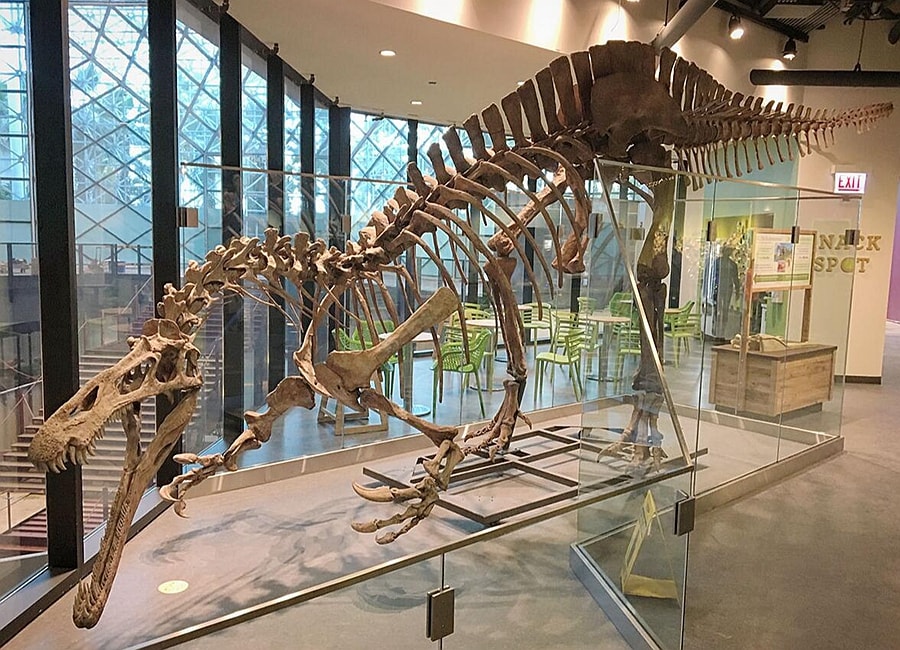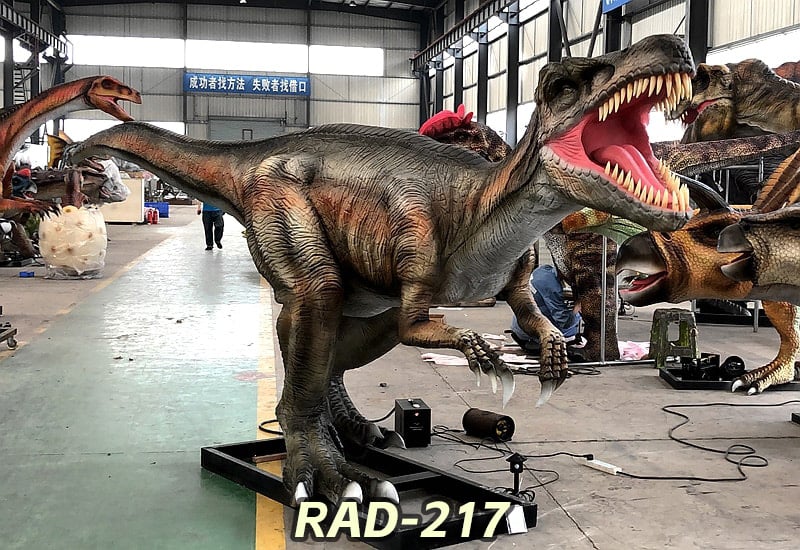Dinosaur Encyclopedia
Giant Predator – Baryonyx
Getting to Know Baryonyx
The name “Baryonyx” means “heavy claw,” and it is a dinosaur belonging to the Spinosauridae family. The earliest Baryonyx fossils were discovered in the United Kingdom, but these fossils actually belong to a juvenile individual. Baryonyx is approximately 3 meters tall, with a body length of 10 to 12 meters, longer than a large bus; it weighs about 2 tons, equivalent to the weight of 25 average adults. Baryonyx has a long and straight neck, unlike other carnivorous dinosaurs (such as Tyrannosaurus rex, Allosaurus) whose necks are S-shaped. Baryonyx’s head is elongated, with a pair of eyes positioned towards the back of the head, and it may have a small crest at the tip of its nose. Its mouth is also long, with 96 teeth, twice as many as its close relatives. The upper jaw has 32 larger teeth, while the lower jaw has 64 teeth. The teeth are conical in shape, with serrated edges, resembling a sharp steak knife, helping in slicing through prey. The front part of Baryonyx’s upper jaw has an upwardly concave slit, a structure designed to better secure prey during biting and prevent it from escaping.

>>>Dinosaur Knowledge Card
- Family: Theropoda · Spinosauridae · Baryonyx Genus
- Distribution: United Kingdom, Niger, Spain
- Time: Early Cretaceous, approximately 125 million years ago
- Body Length: 10-12 meters
- Weight: 2 tons
- Identification Features: Distinctive thumb claw

>>>Body Morphology
Baryonyx has a body length of about 10 meters and weighs around 2 tons. They have a long and straight neck, distinguishing them from carnivorous dinosaurs like Tyrannosaurus rex and Allosaurus. The head of Baryonyx is elongated and its mouth resembles that of a crocodile. The hind limbs of Baryonyx are robust, with three strong toes on the hind feet, and the front feet have a prominent thumb with a super-sized claw. Baryonyx has a long tail used for maintaining body balance.
>>>Sharp Teeth
The number of teeth in Baryonyx’s mouth is different from typical carnivorous dinosaurs, totaling nearly 130, almost twice as many as other carnivorous dinosaurs. These serrated teeth are extremely sharp, and the front end of the upper jaw has a zigzag structure that can prevent prey from escaping. This feature is effective for tasks like catching fish, similar to the teeth characteristics found in modern sharks and crocodiles.
>>>Sharp Claw Knowledge Card
The largest Baryonyx claw discovered so far was found in Surrey, southeastern England, in 1983. When this over 30-centimeter, sickle-shaped giant claw was excavated from the dirty and muddy pit, it caused a sensation in the media. It not only became the first carnivorous dinosaur fossil discovered in the UK but also the largest dinosaur claw ever found. The name “Baryonyx” originated from this discovery.
>>>Hunting
Baryonyx lived in the Early Cretaceous when the climate was humid, and freshwater fish were abundant. Fish over one meter in size, rare today, were quite common, becoming the primary food source for Baryonyx. They used their conical-shaped teeth to bite into the slippery fish bodies, then swallowed them whole, similar to how a grizzly bear would eat.
The image on the right is our produced Animatronic Baryonyx model. It not only has a realistic appearance but can also perform various movements. If you are interested, you can click on the picture to view the product.
